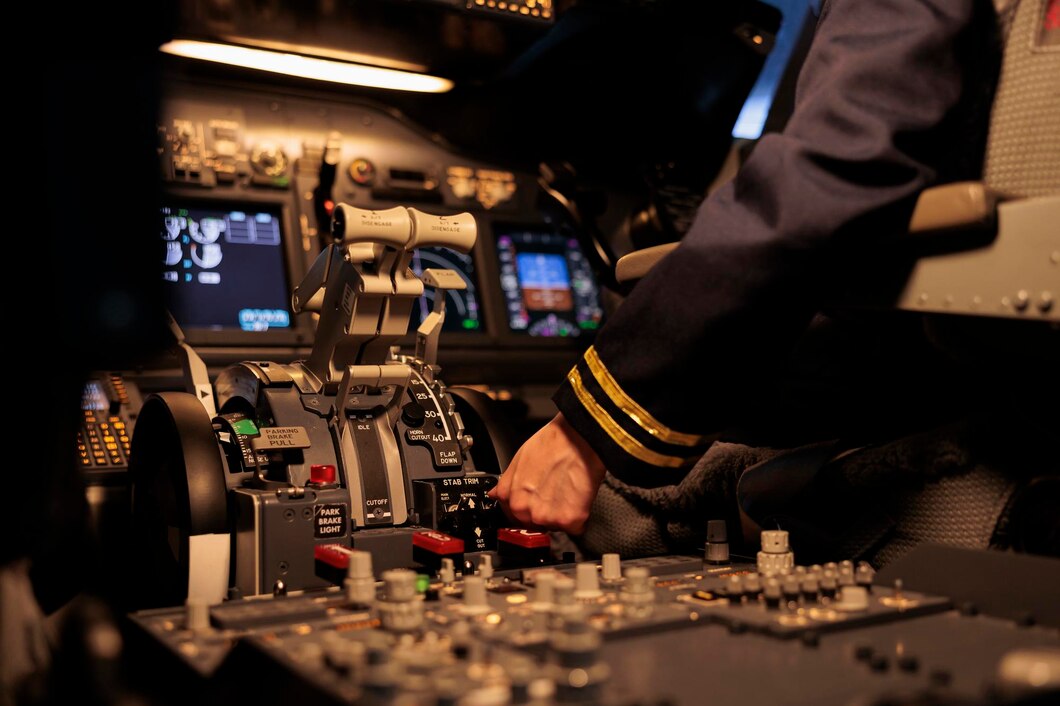
Beyond the Cabin Crew: Comprehensive Uniform Solutions for Saudi Airports in 2025
While airline cabin crew uniforms often capture the spotlight, the reality of airport operations involves dozens of distinct staff roles—each requiring specialized attire that balances functional requirements with brand consistency. In 2025, Saudi Arabia's airports are pioneering a revolutionary approach to staff uniforms, moving beyond siloed solutions toward comprehensive uniform programs that enhance operational efficiency, strengthen brand identity, and elevate the passenger experience.
Recent studies from the International Air Transport Association (IATA) indicate that passengers form impressions of an airport within the first seven minutes of entering the facility, with staff appearance ranking as one of the top three factors influencing these initial perceptions. As Saudi Arabia continues its ambitious expansion of airport infrastructure under Vision 2030, uniform programs have emerged as a critical component of the Kingdom's strategy to establish world-class aviation facilities.
The comprehensive uniform solutions being implemented across Saudi airports in 2025 represent a significant departure from traditional approaches. Rather than treating each department or function as a separate entity, these programs create a cohesive visual ecosystem that strengthens brand recognition while addressing the specific requirements of each role—from passenger service agents and security personnel to maintenance technicians and facility managers.

The 2025 comprehensive uniform program ensures visual unity across all airport departments while meeting specialized functional requirements
The Holistic Approach to Airport Uniform Design
The most significant innovation in Saudi Arabia's 2025 airport uniform strategy is the adoption of a holistic design approach that considers the entire airport ecosystem. This methodology treats uniform development as a comprehensive experience design challenge rather than simply a clothing procurement exercise.
Unified Visual Language with Role-Specific Adaptations
Under this approach, all airport staff uniforms share core design elements that establish instant brand recognition—consistent color palettes, logo applications, and design motifs that reflect the specific airport's identity or the broader Saudi aviation sector. However, within this unified visual framework, each role receives thoughtfully adapted variations that:
- Signal specific functions to passengers through intuitive visual cues
- Accommodate the unique physical demands of each role
- Incorporate appropriate technical features for various environmental conditions
- Enable clear hierarchy and responsibility recognition within teams
For example, the King Abdulaziz International Airport in Jeddah has implemented a comprehensive uniform system where all staff share the airport's signature deep blue and gold color scheme. However, customer-facing roles feature more formal styling with prominent service elements, while maintenance staff have more robust technical uniforms in the same color family with enhanced durability features and practical storage options.
Cross-Functional Design Collaboration
The development of these comprehensive programs typically involves unprecedented collaboration among stakeholders:
- Airport operations specialists who understand the practical requirements of various roles
- Brand and customer experience teams focused on passenger perception
- Health and safety experts ensuring compliance with regulations
- Textile engineers developing role-specific performance fabrics
- Staff representatives providing frontline insights
- Sustainability specialists ensuring alignment with environmental goals
This collaborative approach has yielded uniform systems that successfully balance multiple competing priorities—aesthetic appeal, functional performance, cost efficiency, and sustainability objectives.
Key Role-Specific Uniform Solutions in Saudi Airports (2025)
Saudi Arabia's comprehensive airport uniform programs acknowledge that different roles require specialized solutions. Here's how the 2025 programs address key department needs:
1. Passenger Services & Customer Experience Teams
For staff with significant passenger interaction, the 2025 uniform solutions prioritize:
- Approachability: Designs that appear welcoming and non-intimidating, often featuring softer color accents and more relaxed styling
- Instant recognition: High-visibility elements that allow passengers to easily identify assistance staff in crowded terminals
- Comfort during extended interaction: Breathable fabrics and flexible constructions that remain presentable during long shifts of standing and walking
- Cultural sensitivity: Options accommodating various cultural preferences while maintaining brand consistency
- Multi-seasonal adaptability: Layering systems that work in both the extreme summer heat and the air-conditioned interior environments
These uniforms often incorporate subtle technological elements, such as NFC-enabled name badges that can access passenger information systems or communication tools that integrate seamlessly into the garments.
2. Security Personnel
Security staff uniforms balance authority with approachability through:
- Professional presence: Structured designs that convey authority while avoiding overly militaristic appearance
- Functional equipment integration: Purpose-built features for security tools and communication devices
- Mobility optimization: Strategic stretch panels and articulated construction for physical response scenarios
- Temperature regulation: Advanced fabrics that maintain comfort during long static posts or during active response
- Clear identification: Distinctive elements that immediately identify security personnel without creating passenger anxiety
3. Technical & Maintenance Teams
For staff maintaining the complex systems of modern airports:
- Enhanced durability: Reinforced fabrics and construction in high-wear areas
- Task-specific functionality: Specialized pocket systems and tool accommodation features
- Safety compliance: High-visibility elements, flame-resistant properties, and anti-static features where required
- Comfort in varying environments: Adaptable designs for both indoor technical areas and outdoor exposure
- Brand integration: Incorporation of airport branding in ways that withstand industrial conditions
Several Saudi airports have implemented innovative "zone-specific" technical uniforms that include subtle visual coding to indicate authorization for different critical infrastructure areas, enhancing security protocols while streamlining access management.
4. Administrative & Management Staff
For office-based and leadership roles:
- Professional business attire: Contemporary interpretations of business wear that reflect Saudi corporate standards
- Hierarchy indicators: Subtle design elements that communicate leadership roles
- Versatility: Designs appropriate for both office environments and public-facing responsibilities
- Cultural authenticity: Options that respectfully incorporate elements of traditional Saudi professional attire
These uniforms often feature the highest level of personalization options within the overall system, allowing for individual expression while maintaining clear visual connection to the broader airport team.
Strategic Benefits of Comprehensive Uniform Programs
Saudi Arabia's airport authorities have identified multiple strategic advantages from implementing comprehensive rather than departmentalized uniform programs:
Operational Efficiencies
Consolidated uniform programs have demonstrated significant operational benefits:
- Streamlined procurement: Centralized purchasing has reduced acquisition costs by 18-25% across major Saudi airports
- Simplified inventory management: Unified systems require fewer total SKUs despite accommodating more specialized needs
- Consistent quality control: Standardized quality specifications across all roles ensure durability and appearance longevity
- Optimized replacement cycles: Data-driven forecasting of replacement needs across all departments
These efficiencies translate into substantial cost savings—Riyadh's King Khalid International Airport reported a 22% reduction in uniform-related expenses after transitioning to a comprehensive program, despite increasing the overall quality of garments provided.
Enhanced Brand Experience
From a passenger perspective, comprehensive uniform programs create a more cohesive brand experience:
- Consistent brand impression: Every staff interaction reinforces the same visual identity
- Improved navigational cues: Intuitive role identification helps passengers know who to approach for specific needs
- Perception of organizational excellence: Visual cohesion suggests operational cohesion and attention to detail
- Cultural storytelling: Thoughtfully incorporated Saudi design elements communicate cultural identity to international travelers
Passenger satisfaction surveys conducted across Saudi airports show a 17% increase in positive ratings for "staff appearance and professionalism" following the implementation of comprehensive uniform programs.
Staff Satisfaction and Retention
Perhaps surprisingly, staff feedback indicates that well-designed comprehensive uniform programs positively impact employee experience:
- Increased pride in affiliation: Staff report stronger organizational identification when wearing visibly connected uniforms
- Improved cross-departmental respect: Visual cohesion reinforces the concept of "one team" despite specialized roles
- Recognition of role importance: Thoughtful role-specific adaptations communicate that all functions are valued
- Reduced status disparity: Quality consistency across roles eliminates perception of favoritism toward passenger-facing positions
Employee satisfaction metrics collected by the Saudi Aviation HR Consortium indicate a positive correlation between comprehensive uniform programs and reduced turnover rates, particularly in technical and operational roles that historically received less attention in uniform development.
Implementation Challenges and Solutions
While the benefits of comprehensive uniform programs are clear, their implementation presents significant challenges that Saudi aviation authorities have addressed through innovative approaches:
Size and Fit Standardization
One of the most complex aspects of large-scale uniform programs is accommodating the diverse physical characteristics of staff across departments. Saudi airports have addressed this through:
- 3D body scanning technology: Digital measurement systems that create precise sizing profiles
- Expanded size ranges: Development of inclusive sizing systems that accommodate a wider range of body types
- Cultural accommodation: Thoughtful design elements that respect various levels of modesty preference
- Adaptive fit systems: Incorporation of adjustable features that allow personalized fit within standardized garments
Balancing Durability with Sustainability
The 2025 programs have had to navigate the tension between creating durable uniforms that withstand demanding airport environments and meeting increasingly stringent sustainability goals:
- Lifecycle assessment: Comprehensive analysis of environmental impact across the entire uniform lifecycle
- Role-appropriate durability: Matching material specifications to actual wear patterns of specific roles
- Circular design principles: Creating garments with end-of-life recycling or repurposing in mind
- Repair programs: Implementing systems for extending garment life through professional repair services
Saudi airports have established industry-leading standards for uniform sustainability without compromising on performance, achieving a 40% reduction in uniform-related carbon footprint compared to previous programs.
Change Management and Cultural Adaptation
Perhaps the most nuanced challenge has been managing the human element of uniform transitions:
- Inclusive development process: Engaging staff representatives from all departments in design development
- Transparent communication: Clear explanation of program objectives and benefits
- Phased implementation: Gradual rollout strategies that allow for adjustment and refinement
- Feedback mechanisms: Ongoing systems for collecting user experience data and making iterative improvements
This focus on the human dimension of uniform programs has been critical to their successful adoption across the diverse workforce of Saudi airports.
Future Directions and Evolving Standards
As Saudi Arabia continues to develop its aviation infrastructure, airport uniform programs continue to evolve. Several emerging trends suggest the future direction of comprehensive uniform solutions:
Increased Personalization Within Cohesive Systems
Future programs are likely to offer even greater personalization options within the unified framework:
- AI-powered recommendation systems that suggest optimal uniform configurations for individual staff
- Digital ID integration that personalizes uniform elements while maintaining clear role identification
- Expanded cultural and personal preference accommodations without compromising brand consistency
Advanced Performance Monitoring
Emerging technologies are enabling more sophisticated assessment of uniform performance:
- Embedded sensors that provide real-time data on garment condition and performance
- Predictive maintenance algorithms that identify replacement needs before visible wear occurs
- Environmental impact tracking throughout the uniform lifecycle
Integration with Broader Experience Design
Future uniform programs will be even more closely aligned with overall passenger journey mapping:
- Uniform elements specifically designed to enhance critical touchpoints in the passenger experience
- Coordination between uniform design and architectural/interior design elements
- Seasonal or special event adaptations that align with broader airport experiential initiatives
These evolving approaches ensure that Saudi Arabia's airport uniform programs will continue to set global standards for innovation, functionality, and brand expression.
Conclusion: Uniforms as Strategic Assets
The comprehensive uniform solutions implemented across Saudi airports in 2025 represent a significant shift in thinking—from viewing uniforms as necessary expenses to recognizing them as strategic assets that enhance operational efficiency, strengthen brand identity, and contribute to both passenger and employee satisfaction.
By adopting a holistic approach that considers the entire airport ecosystem, Saudi aviation authorities have created uniform programs that deliver measurable benefits across multiple dimensions. The result is a visually cohesive yet functionally specialized uniform system that supports the Kingdom's ambitions to establish world-class aviation facilities.
For aviation industry stakeholders worldwide, Saudi Arabia's approach to comprehensive uniform solutions offers valuable insights into the strategic potential of thoughtfully developed staff attire systems. As airports continue to compete for passenger preference in an increasingly global marketplace, these integrated uniform programs demonstrate how attention to detail in staff presentation can contribute to overall service excellence and brand differentiation.

Sara Al-Harbi
Aviation Services Consultant
Sara specializes in airport operations and service excellence, with extensive experience advising Saudi and international aviation organizations.
Subscribe to Our Aviation Industry Updates
Receive the latest insights, trends, and best practices for aviation uniforms and staff management.
Related Articles
Need Custom Uniform Solutions for Your Aviation Operation?
Our team specializes in creating comprehensive uniform programs tailored to the specific needs of Saudi airports and airlines.
Request a Consultation
